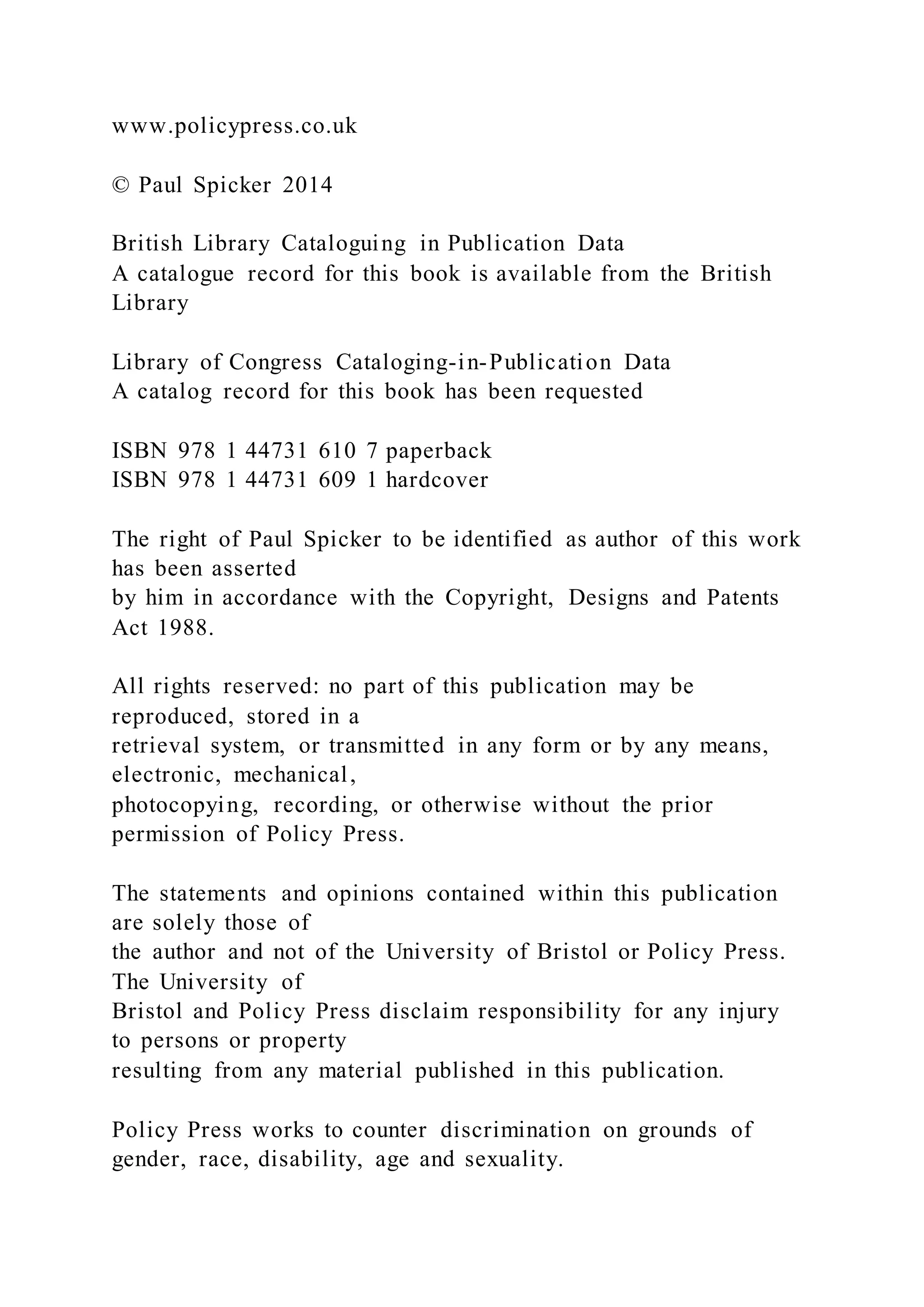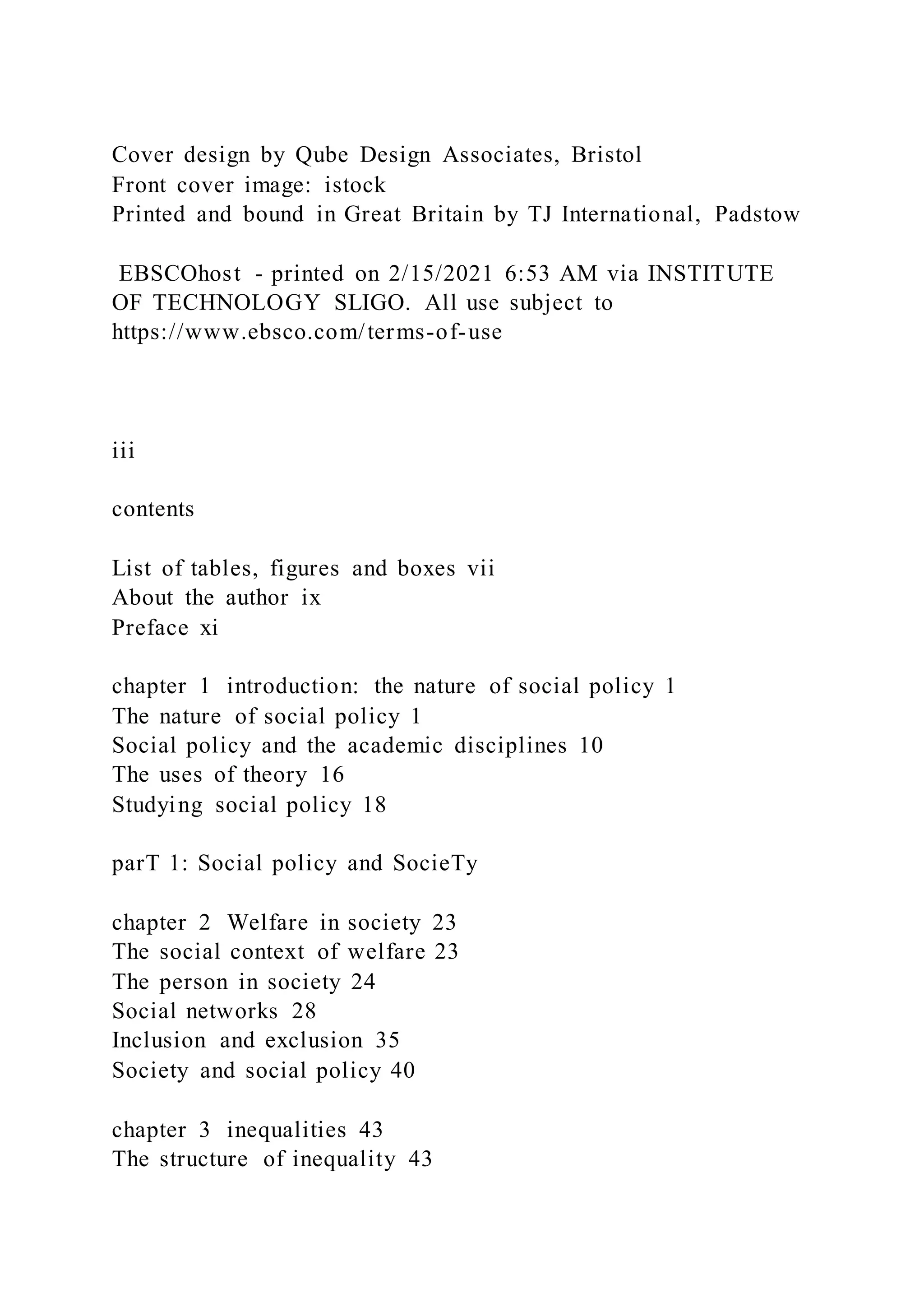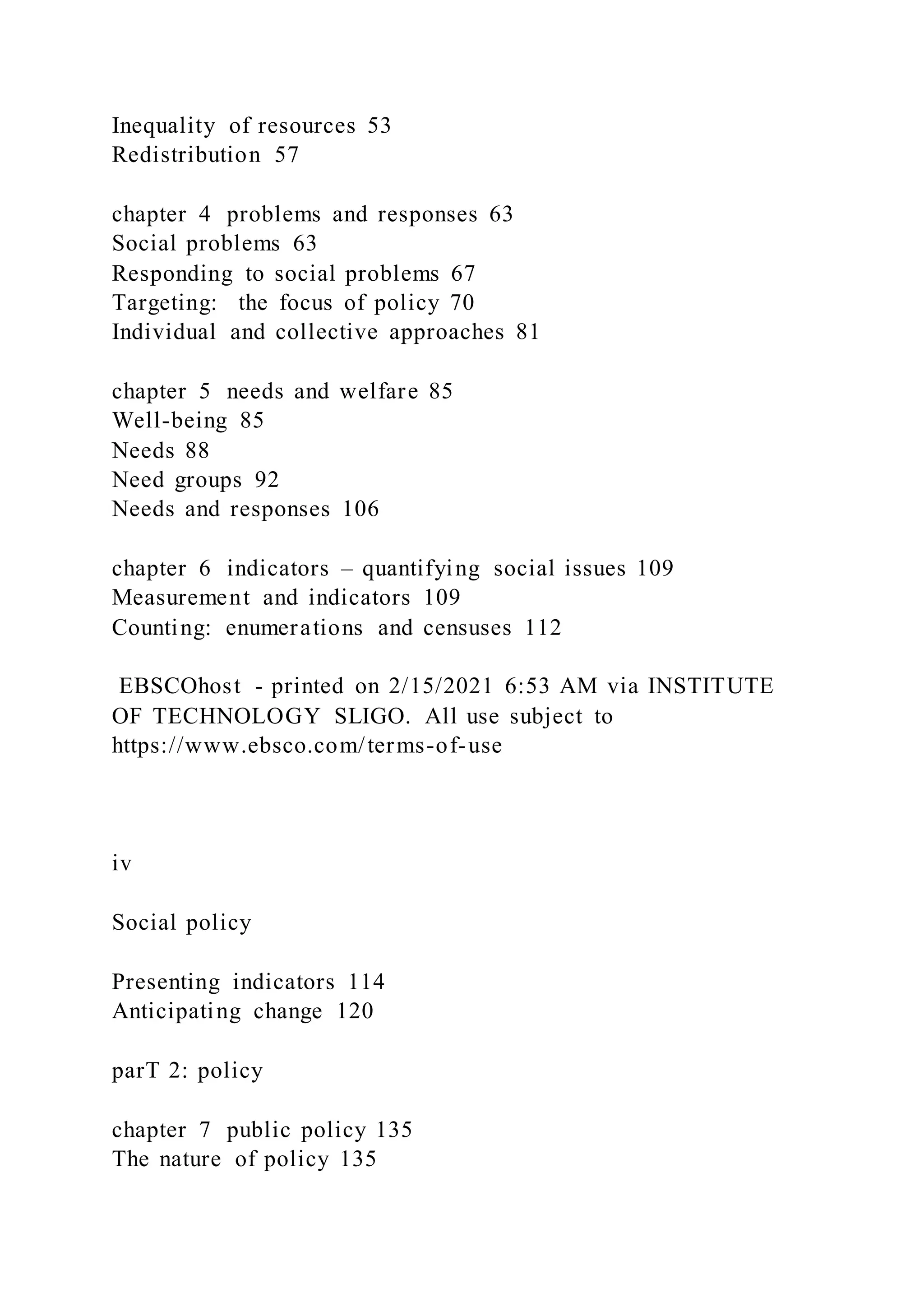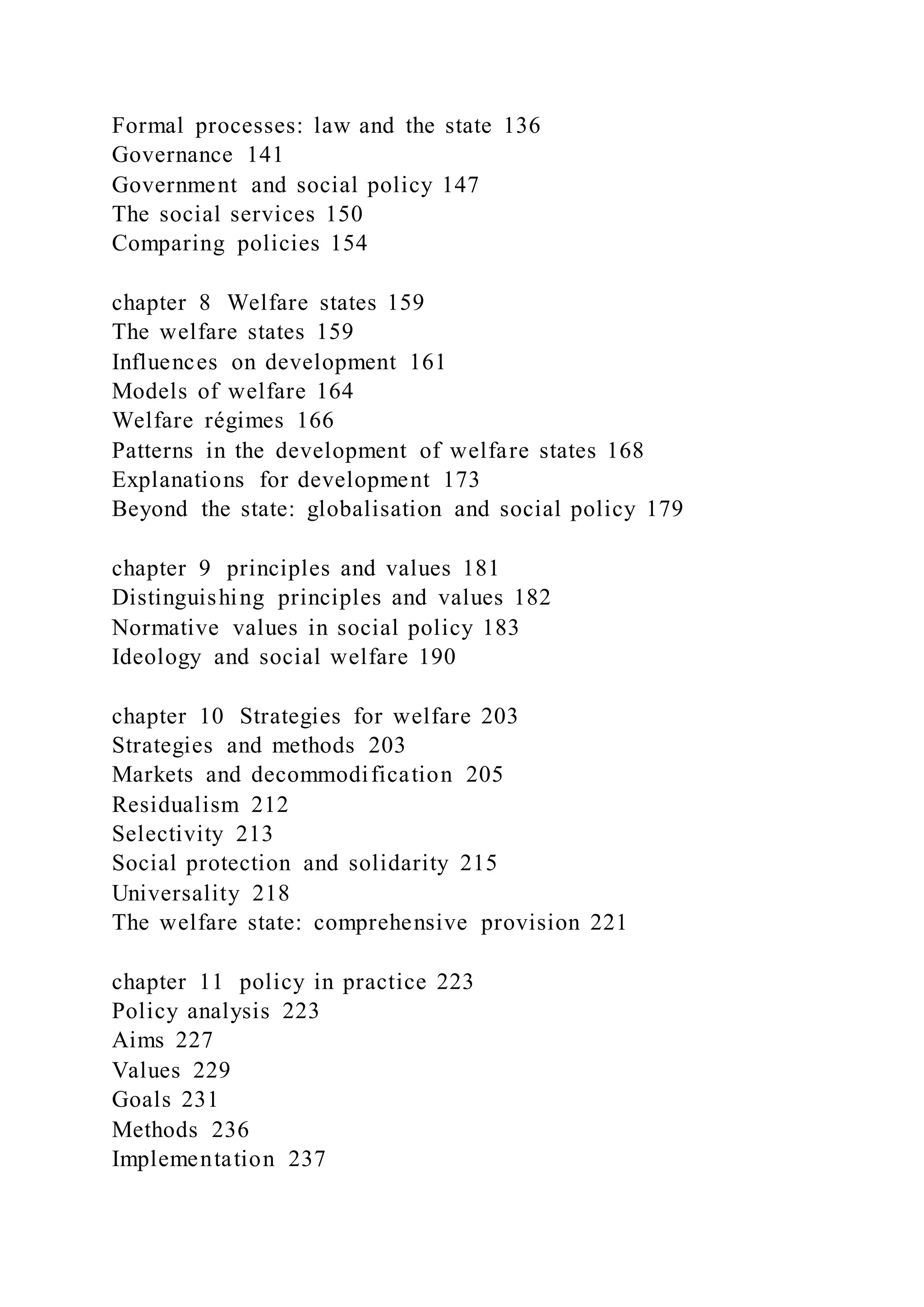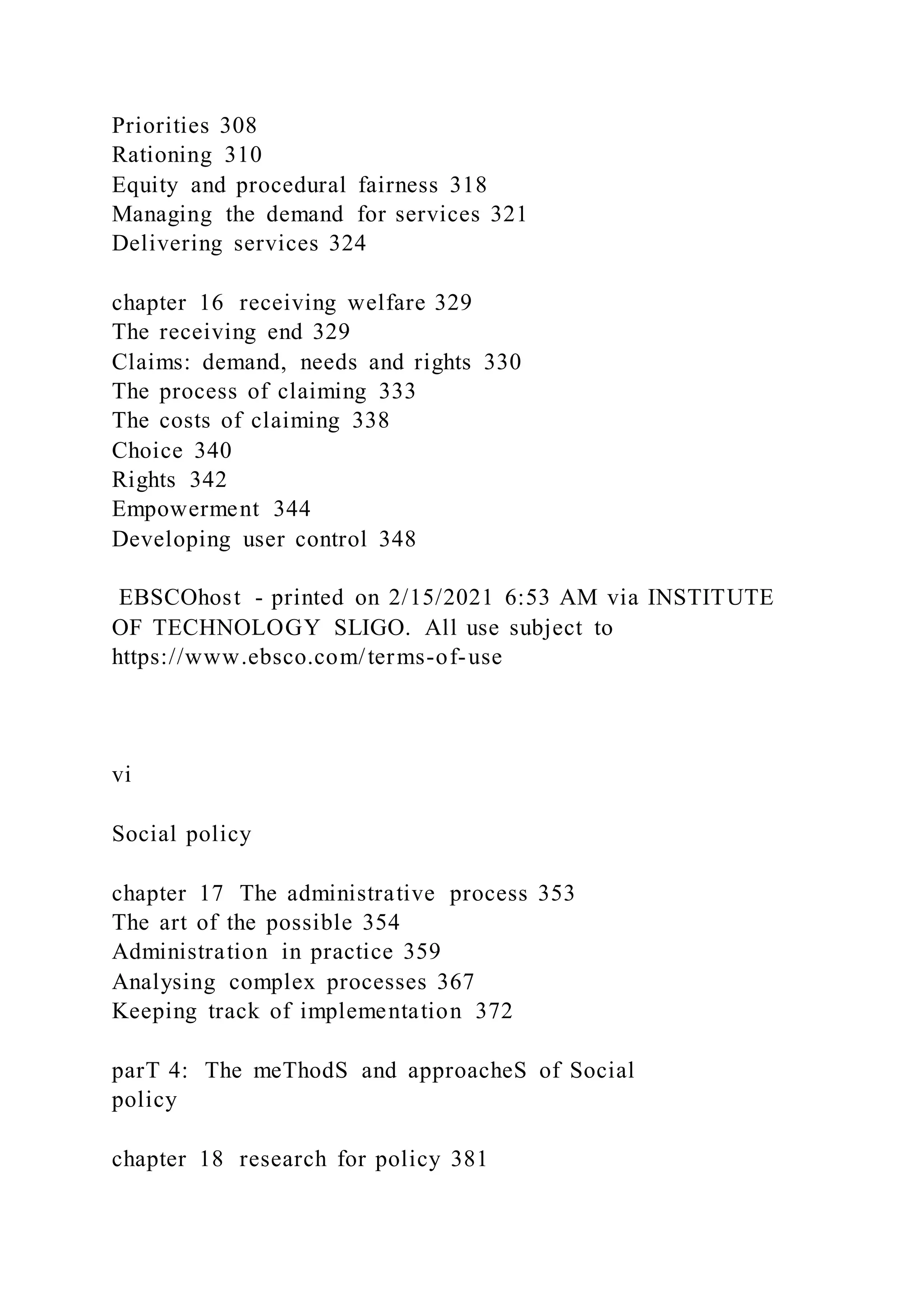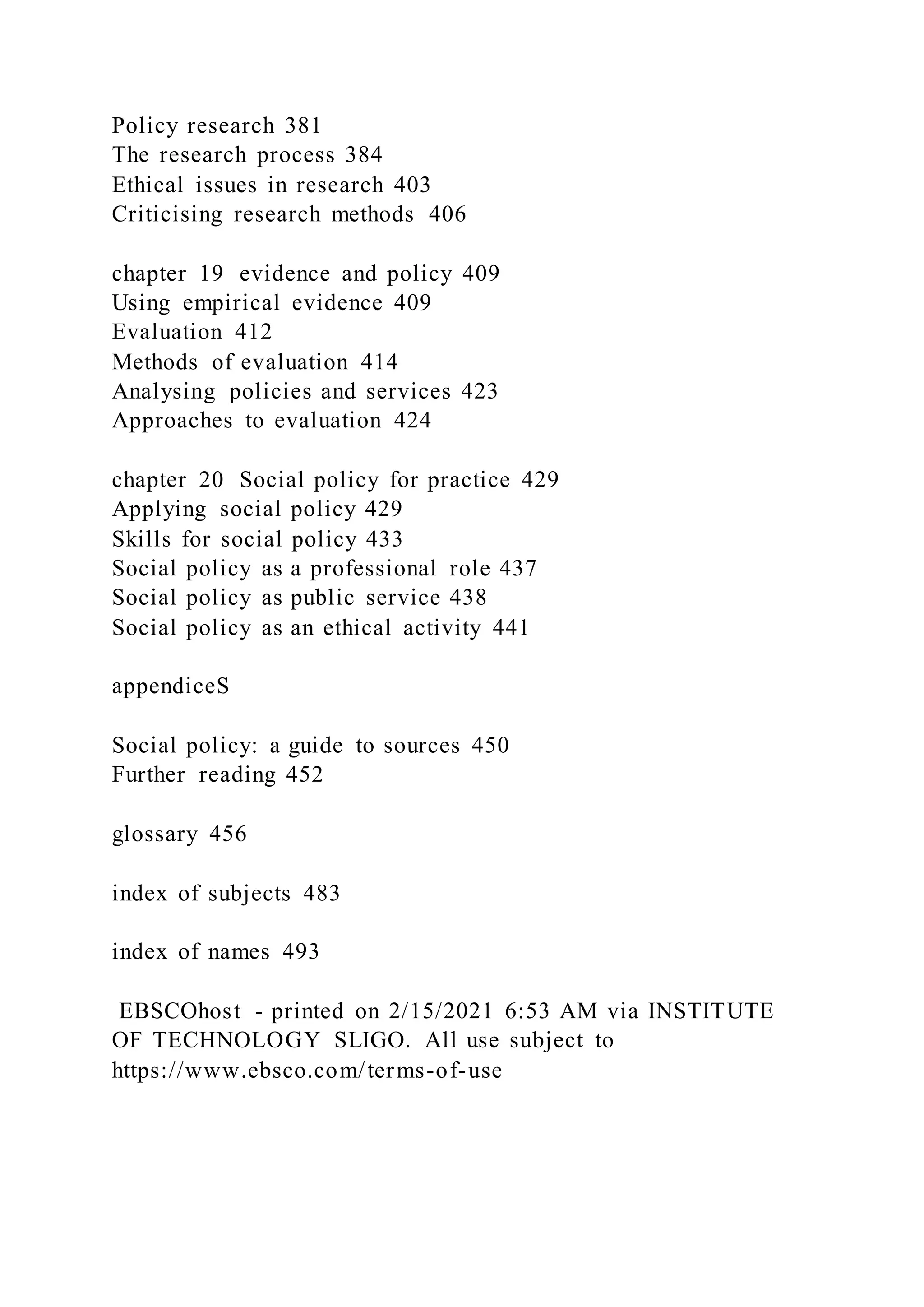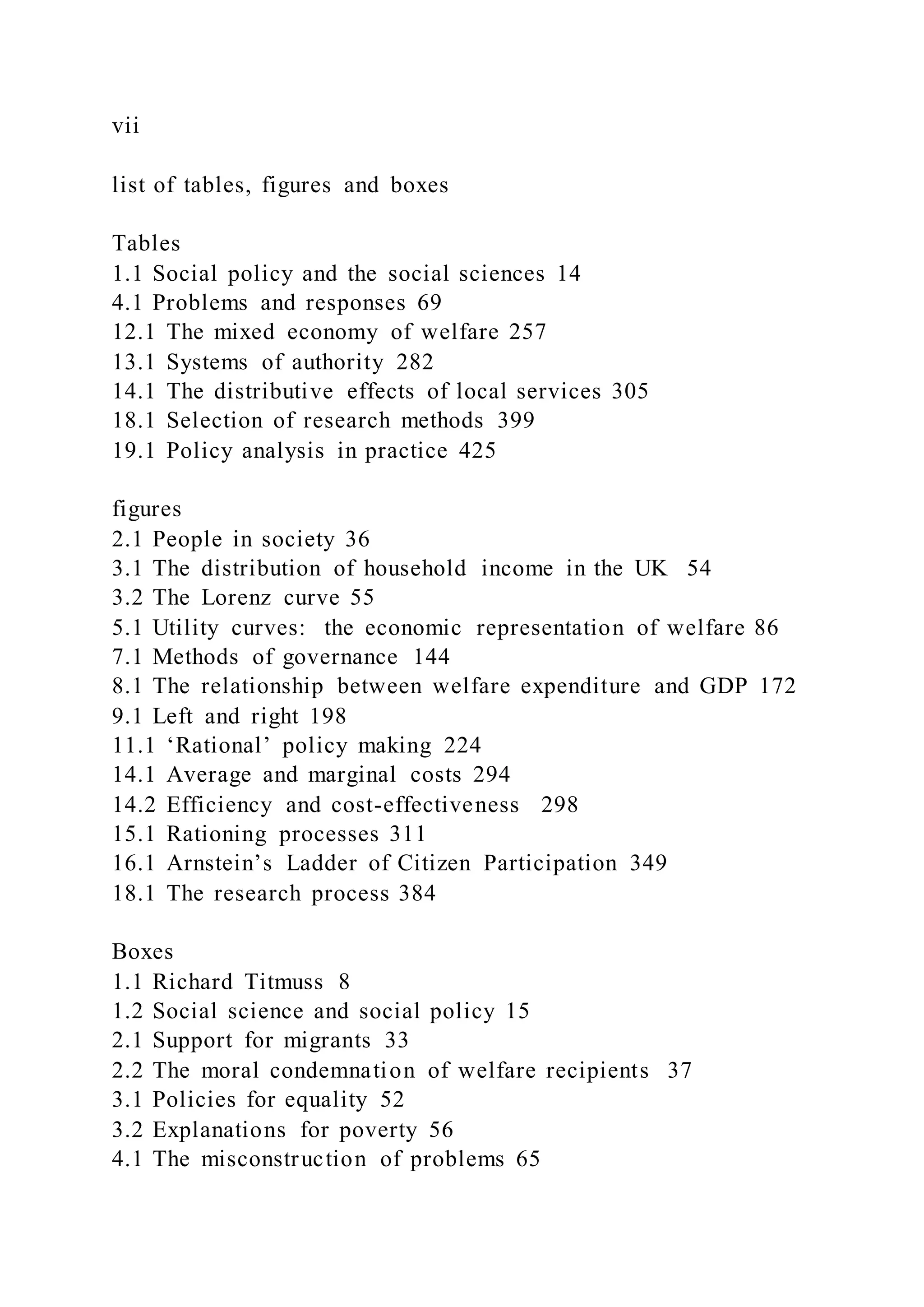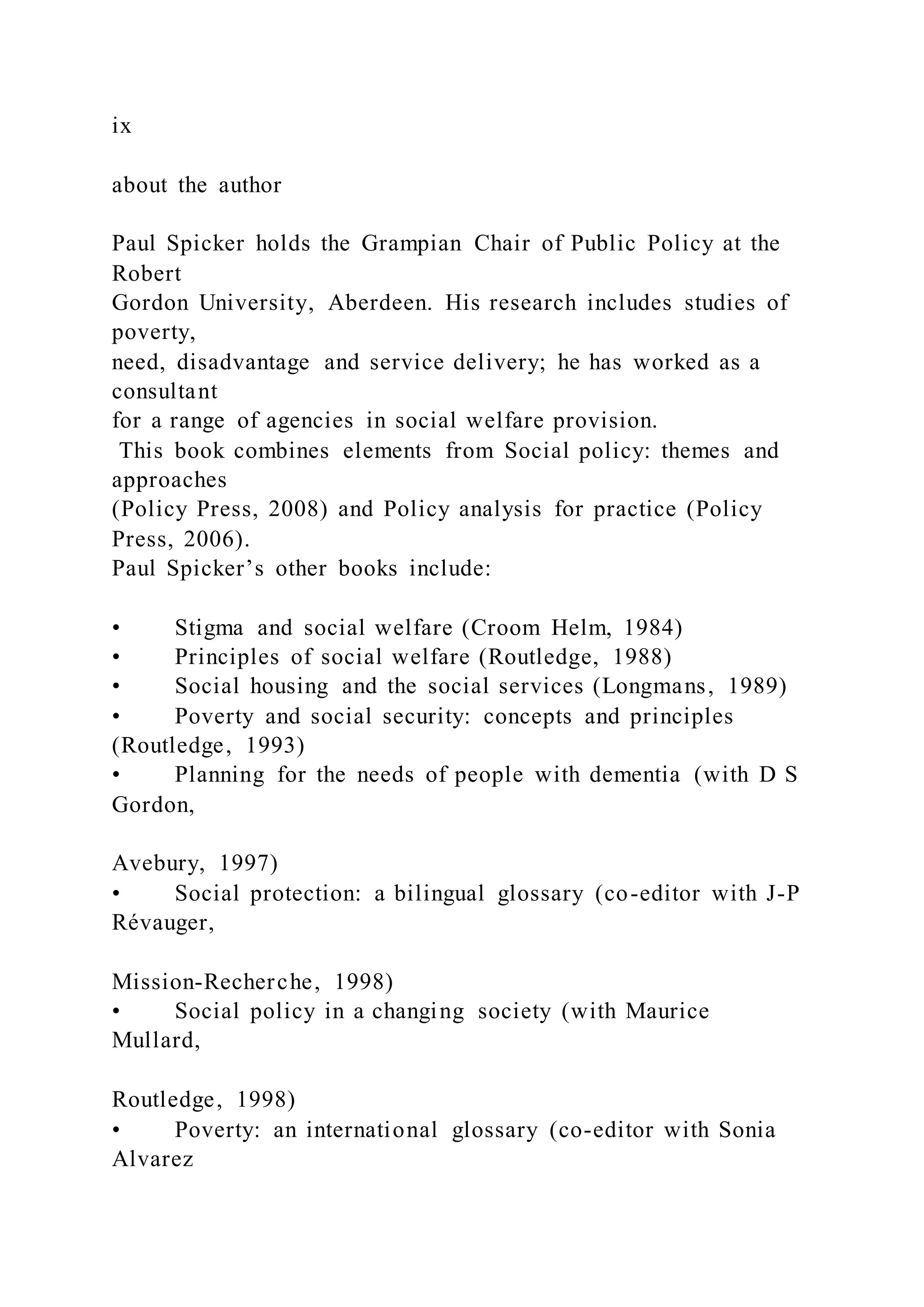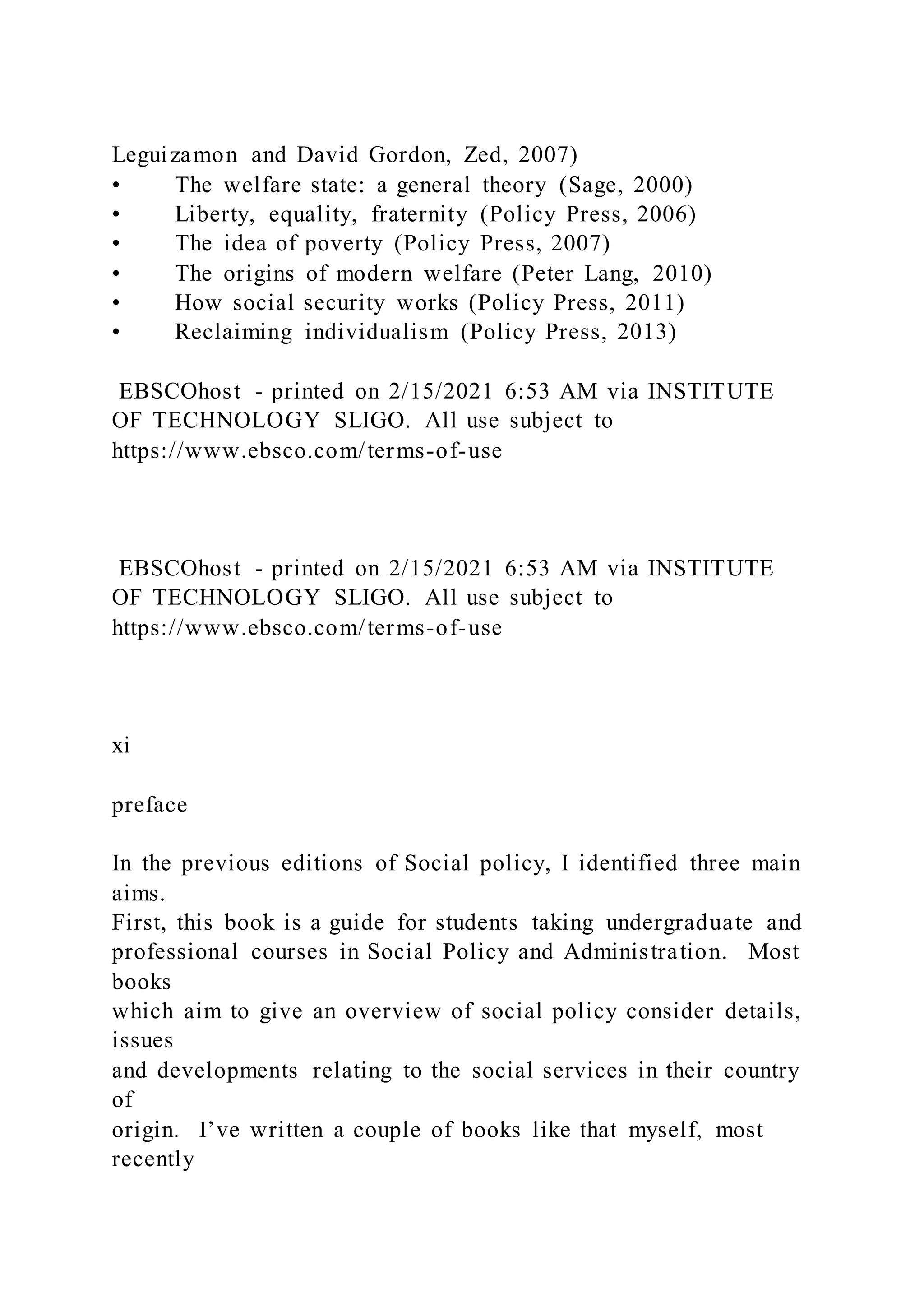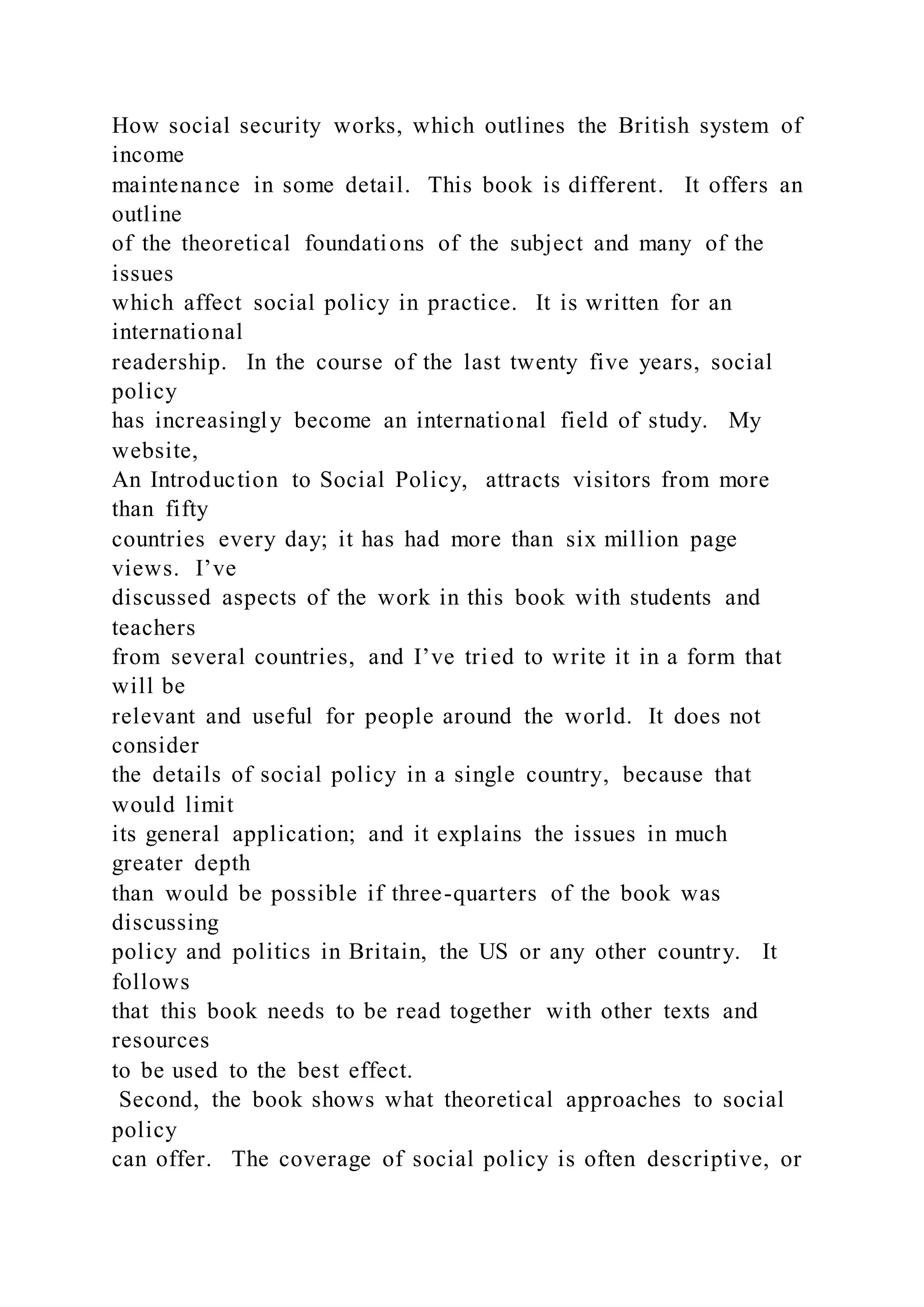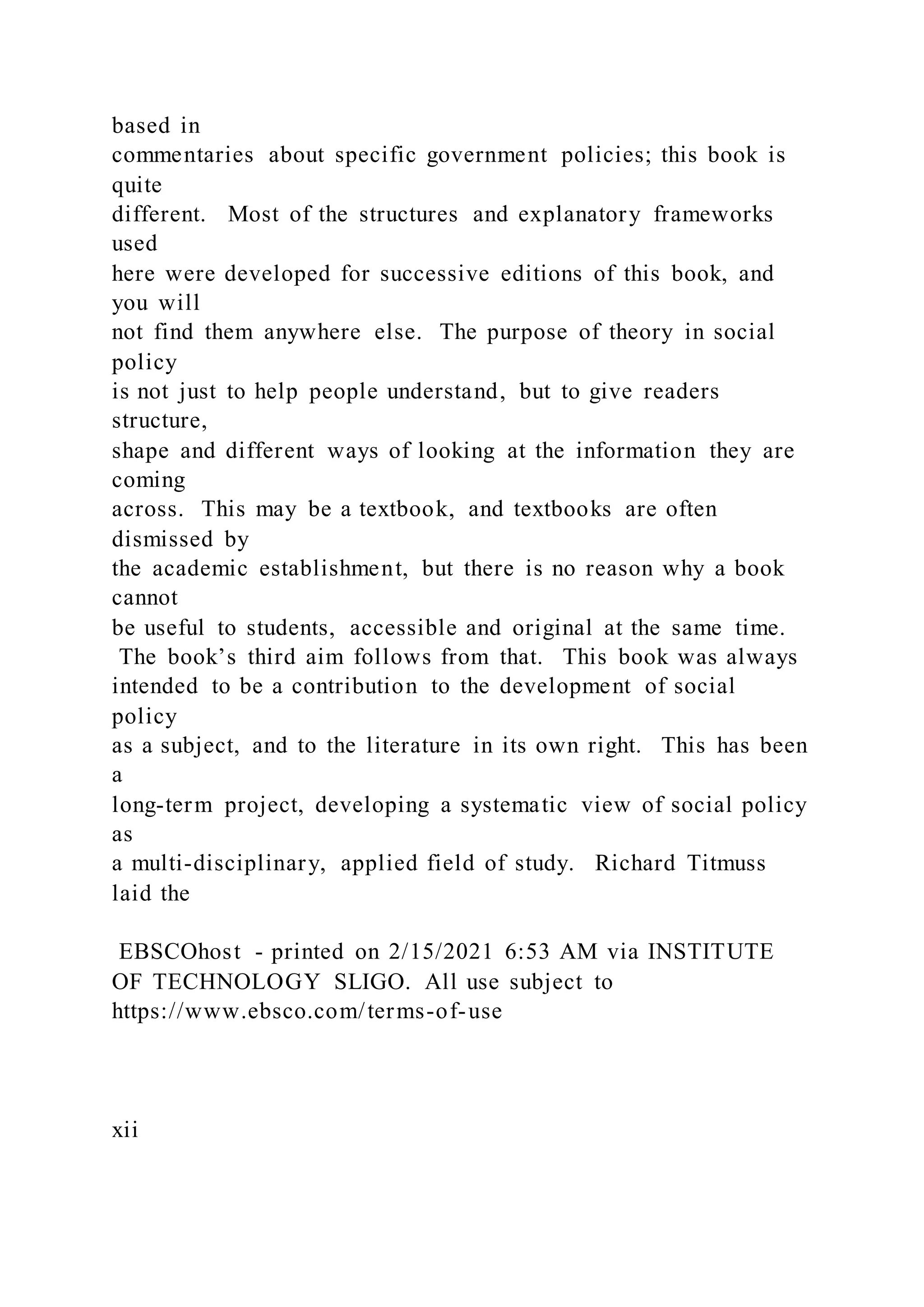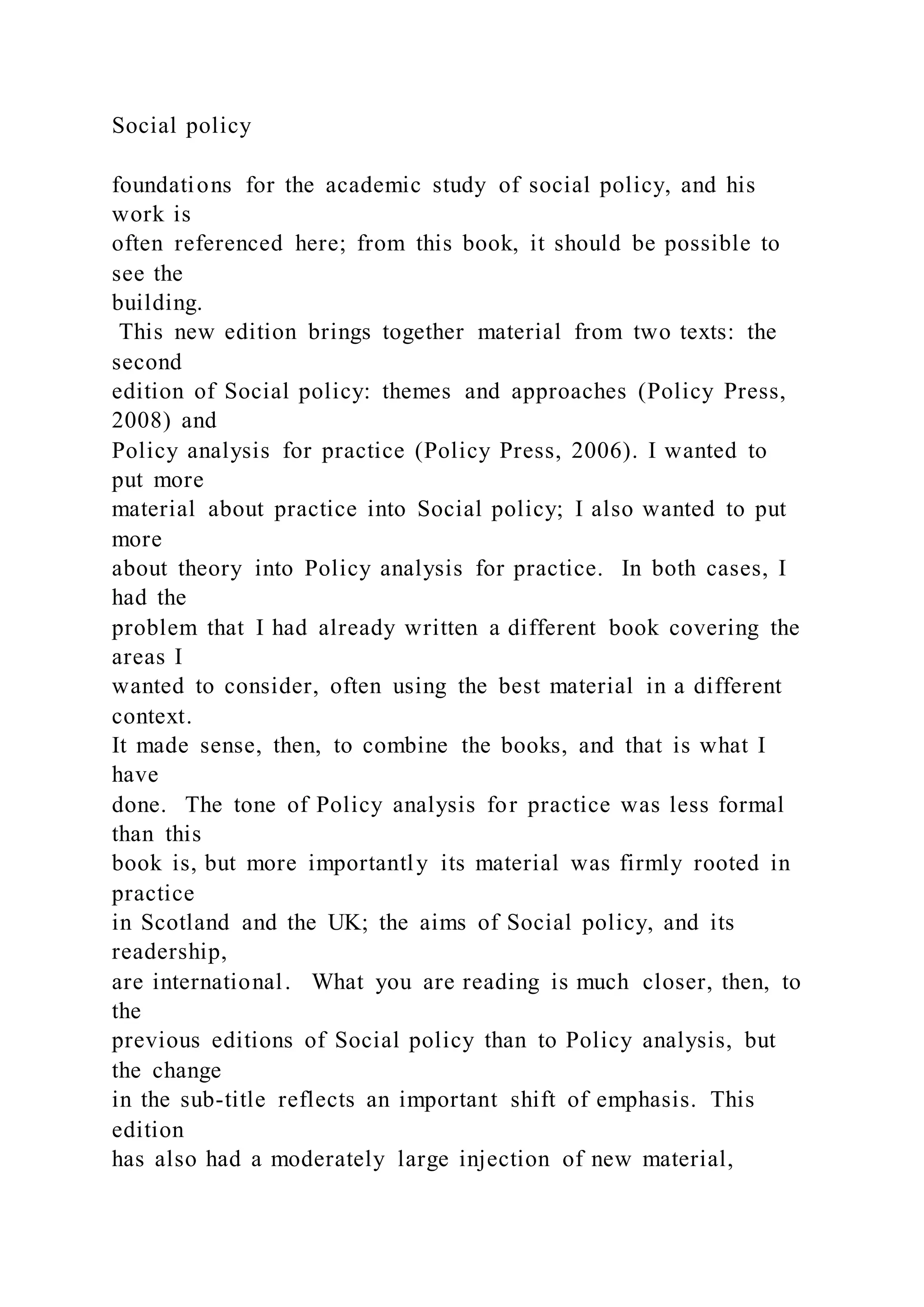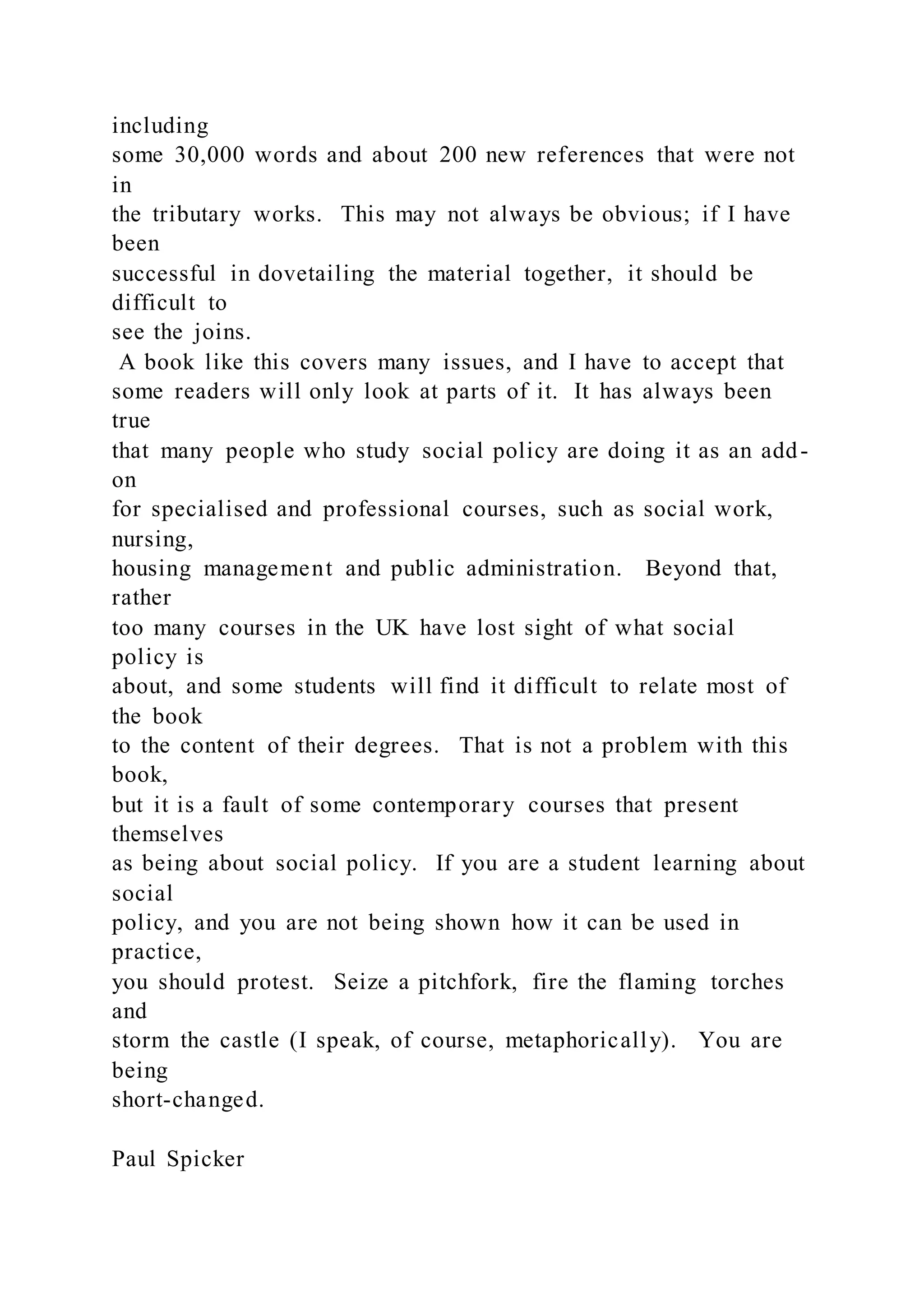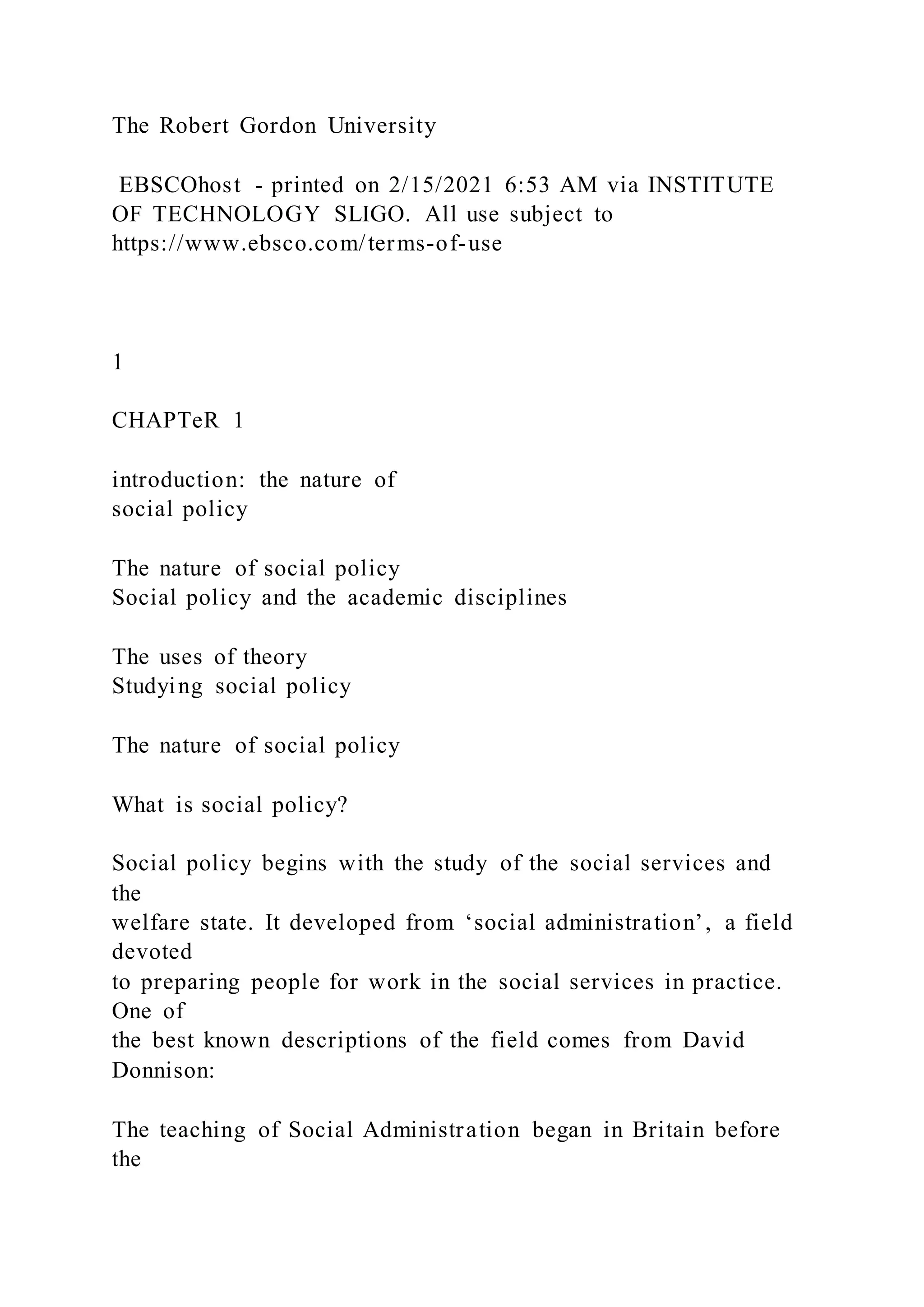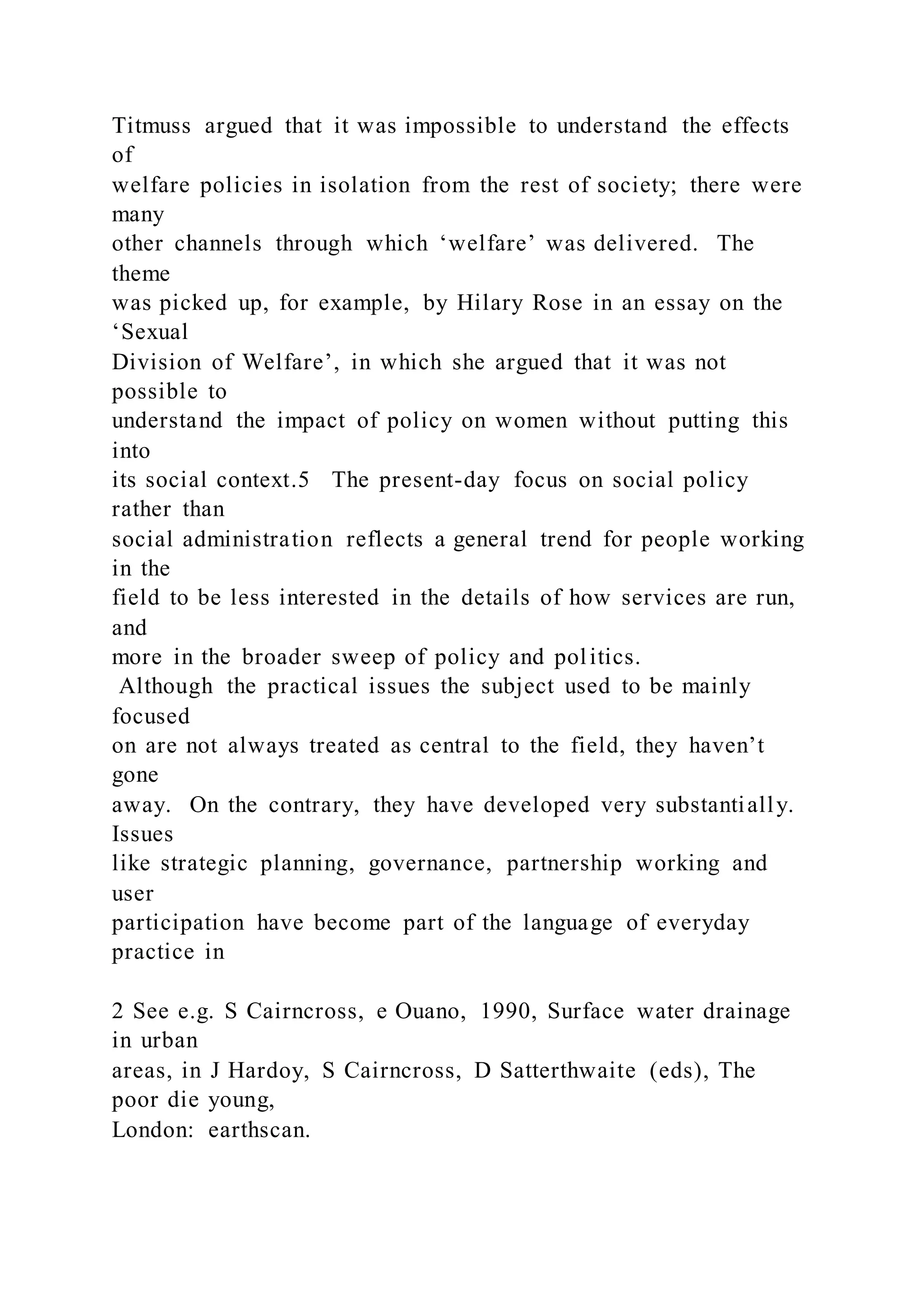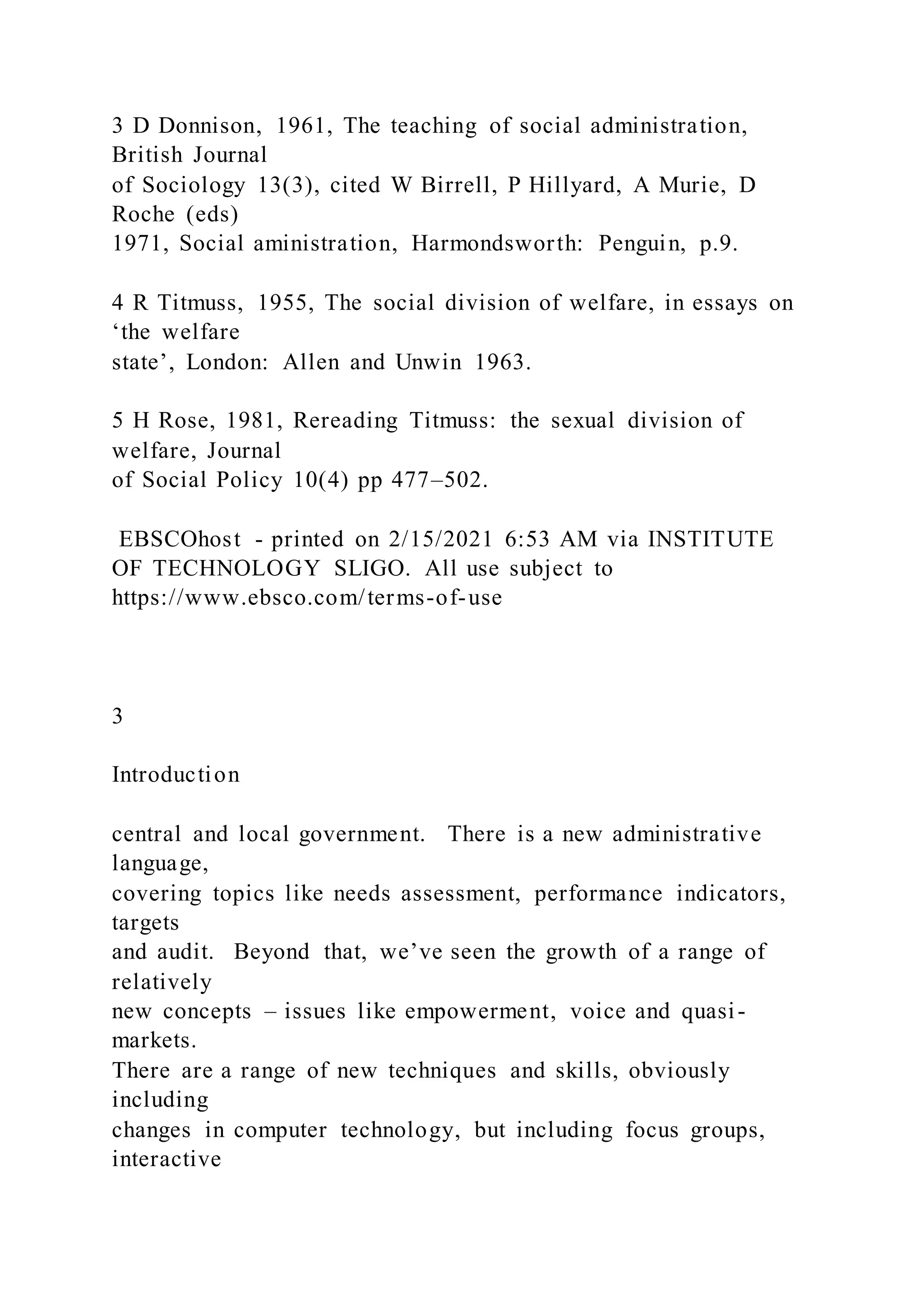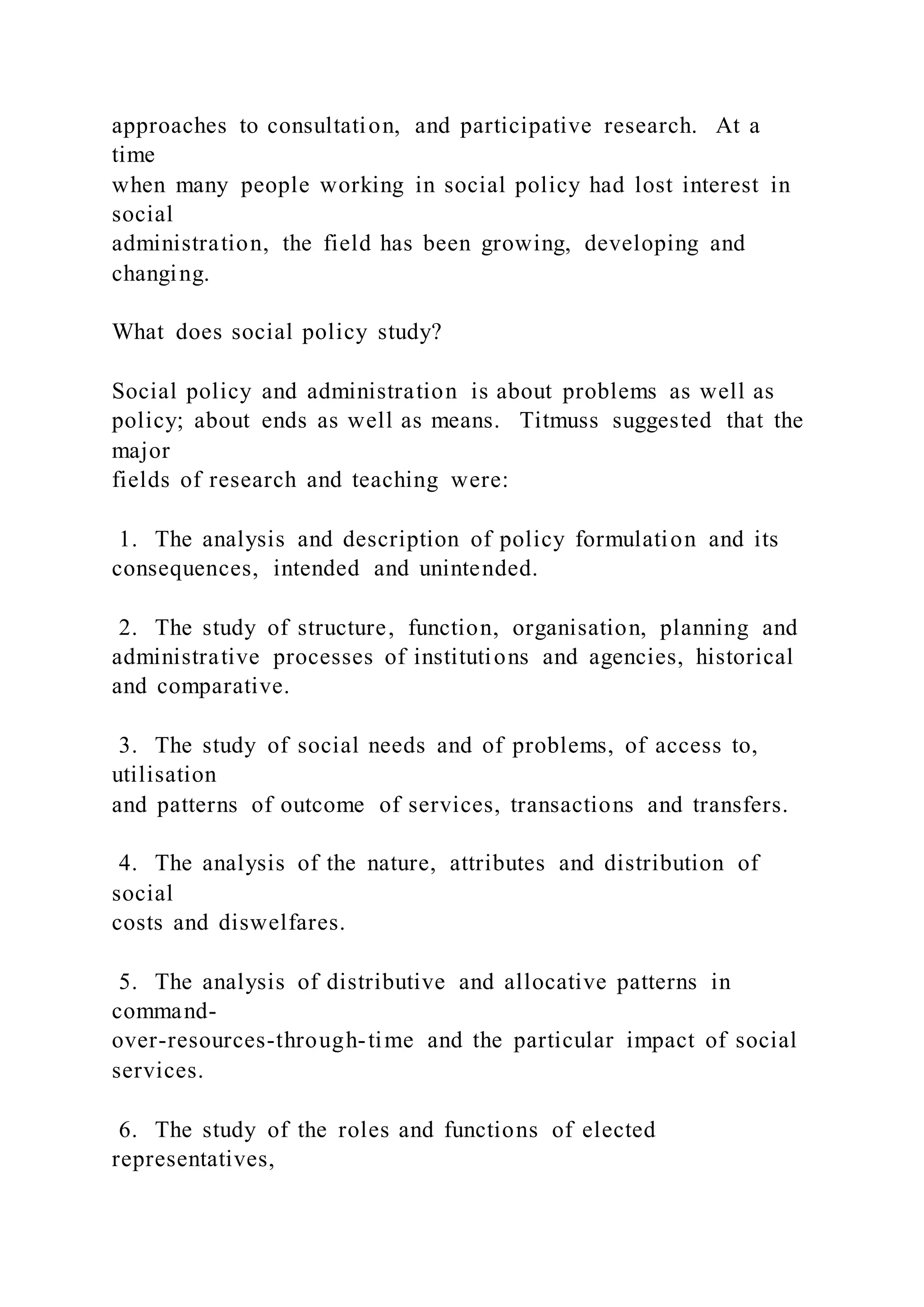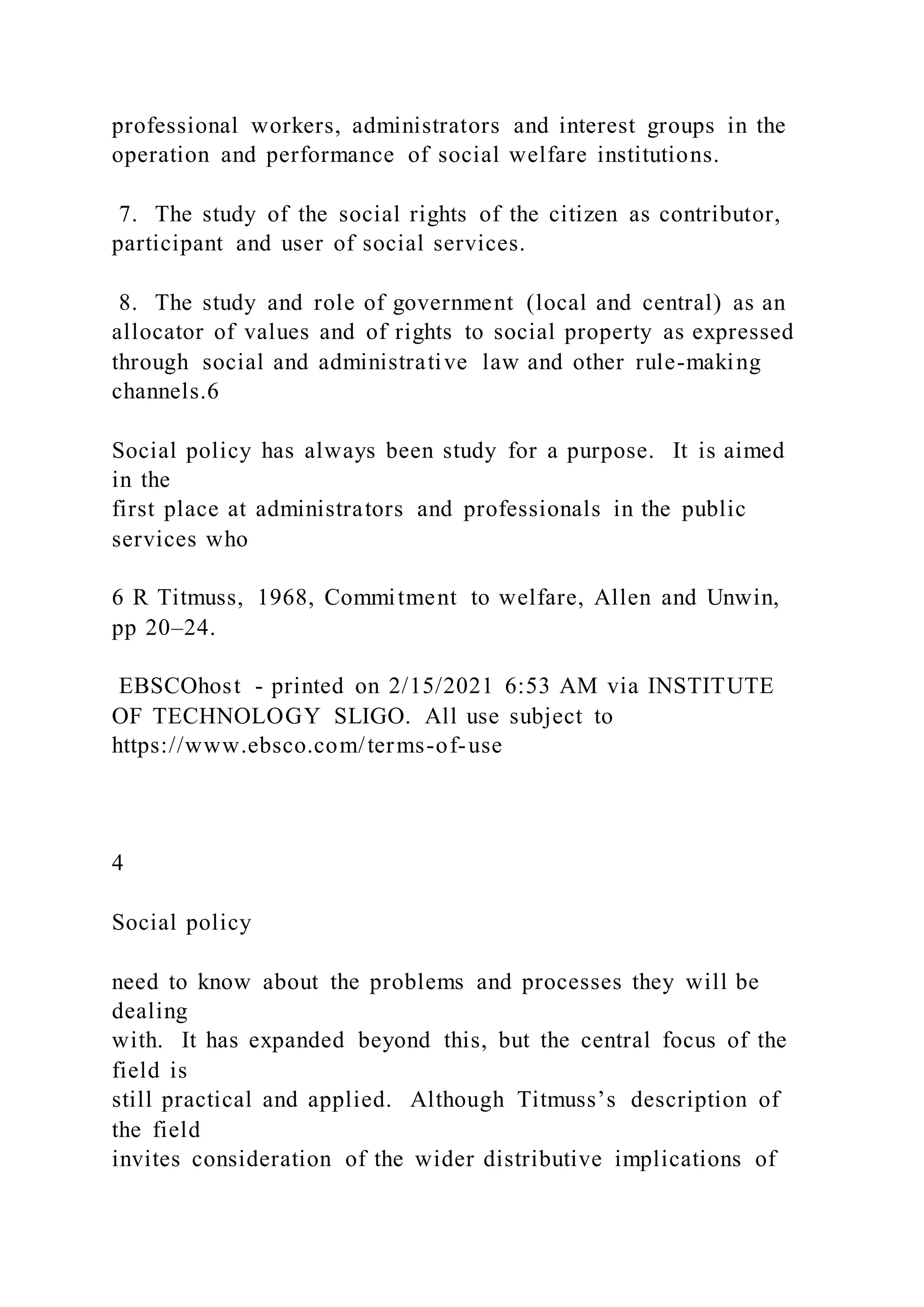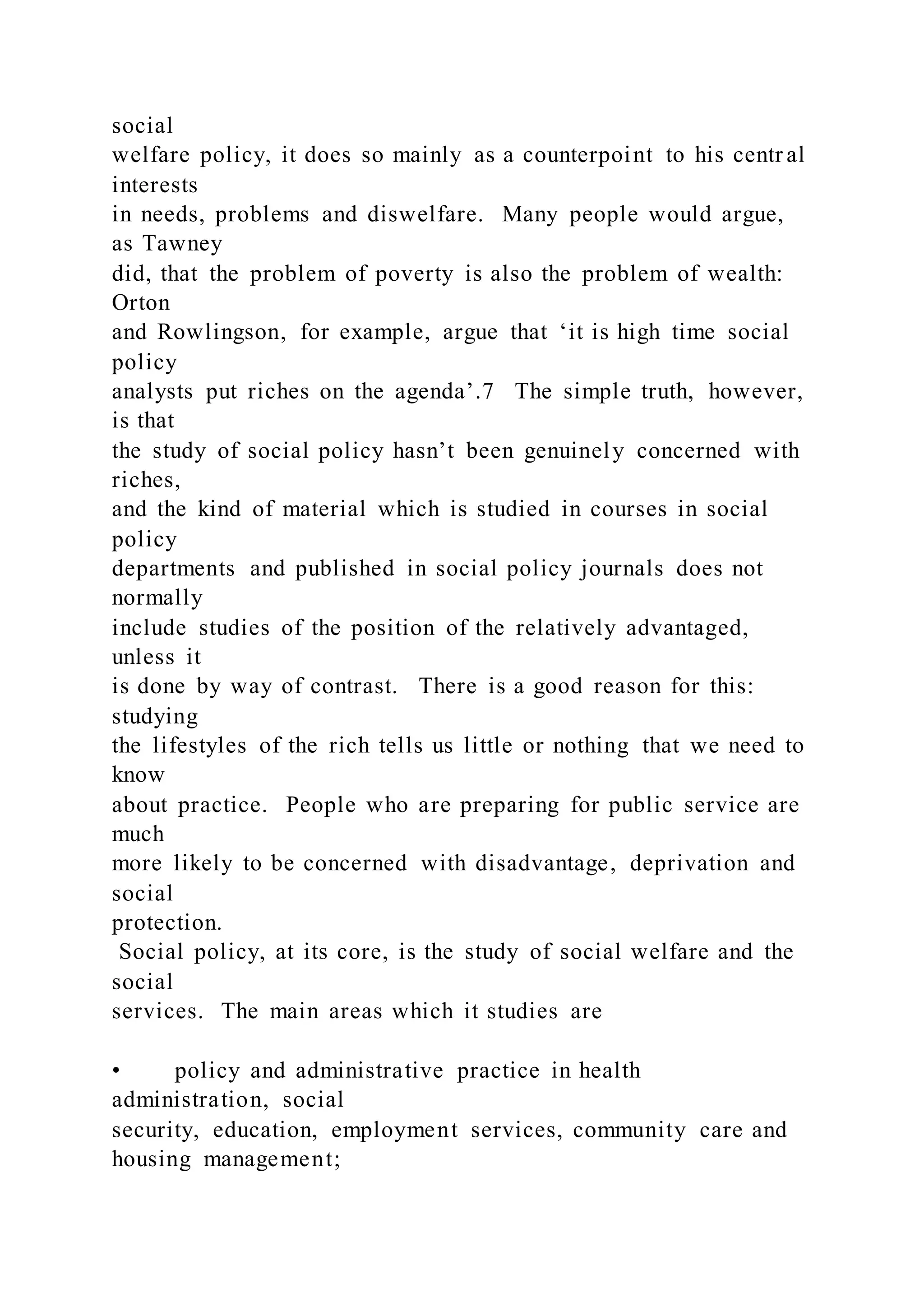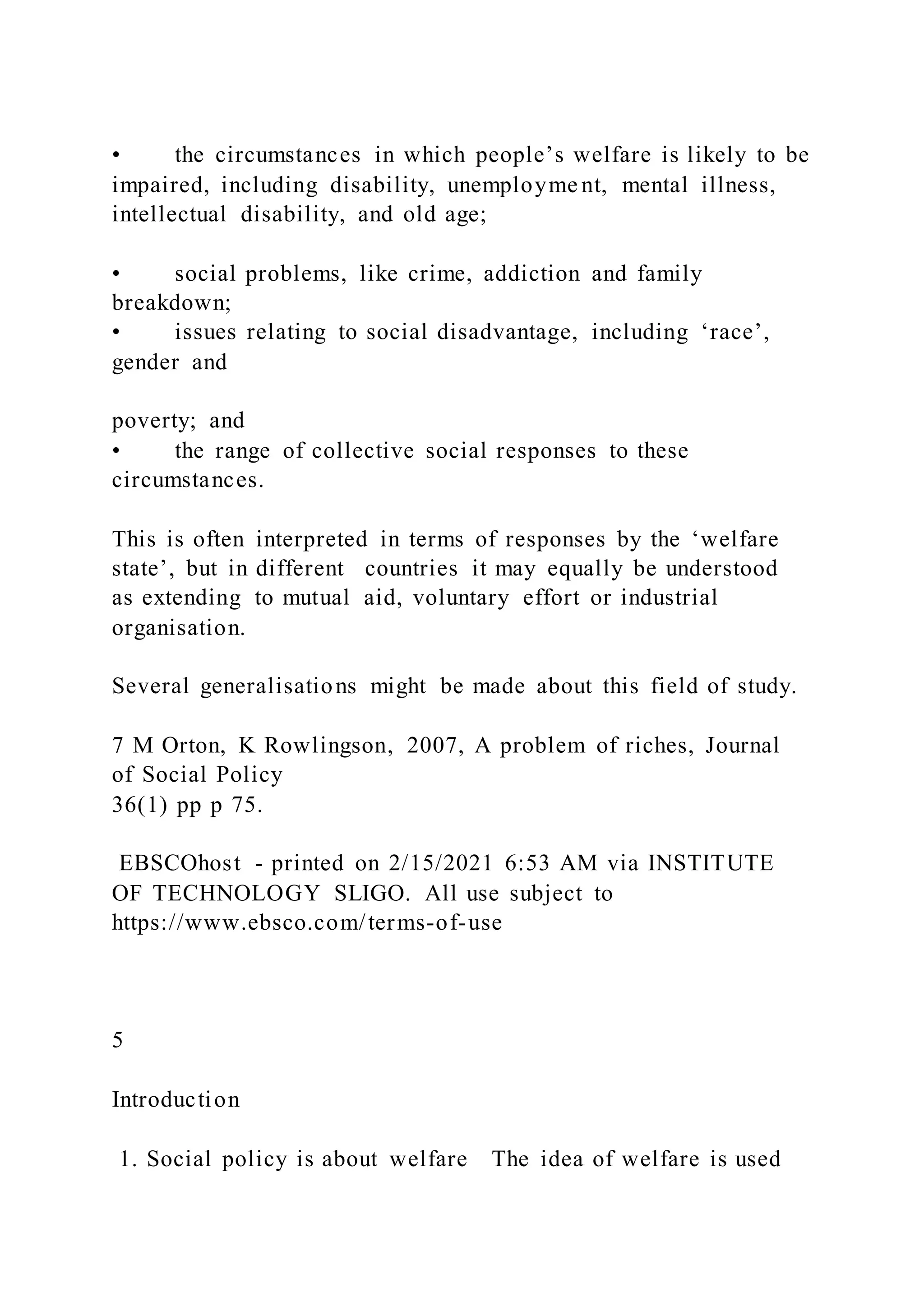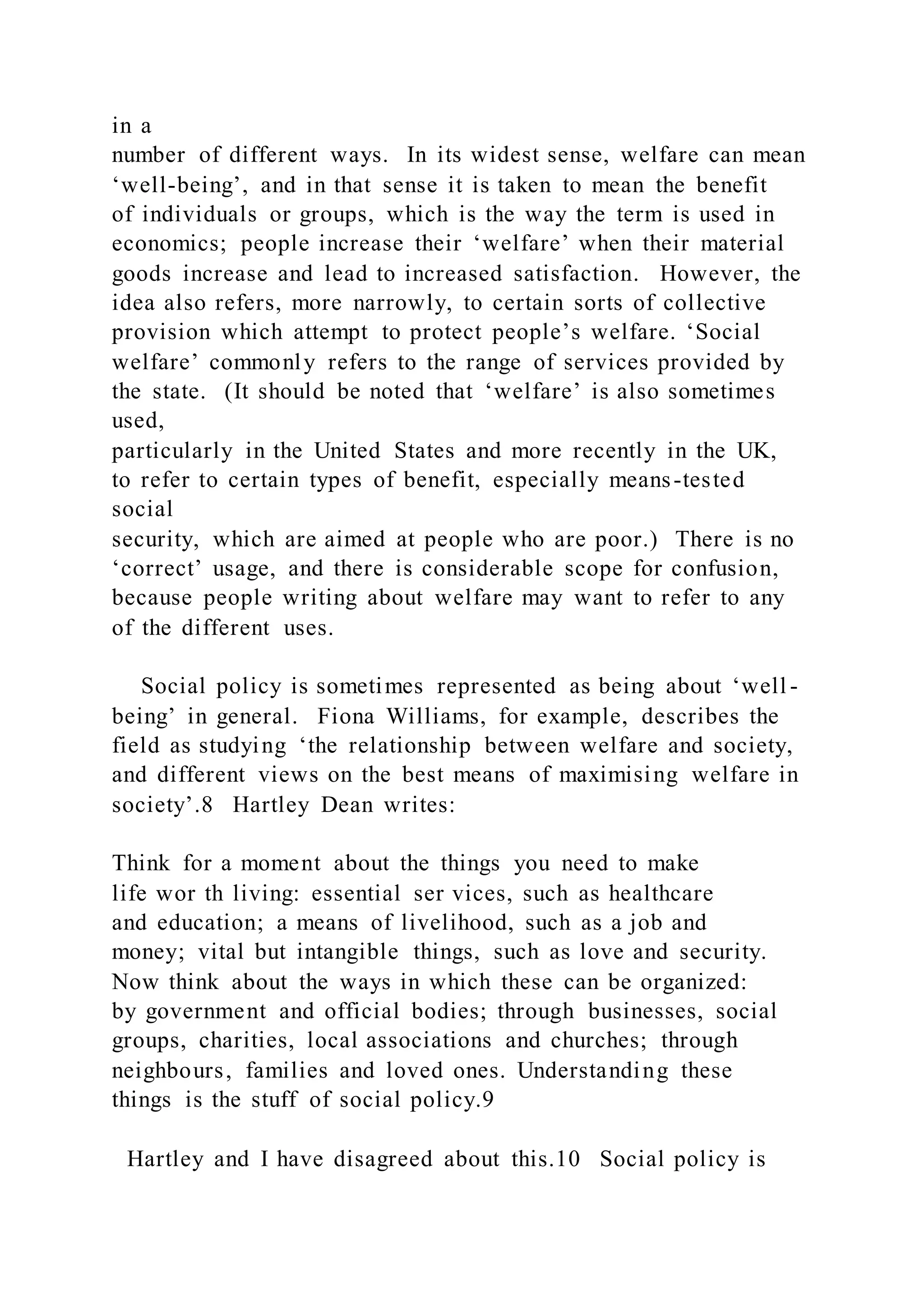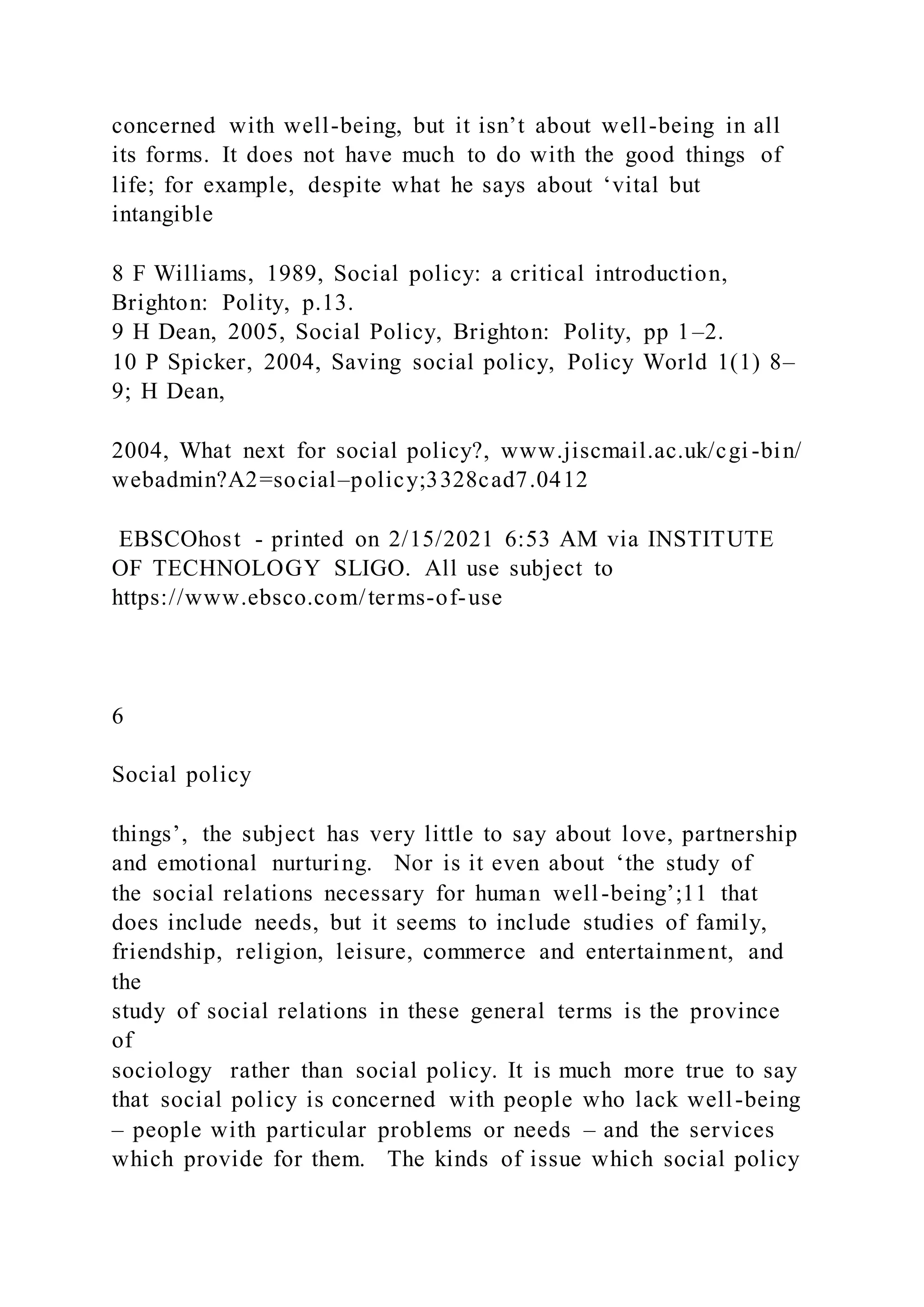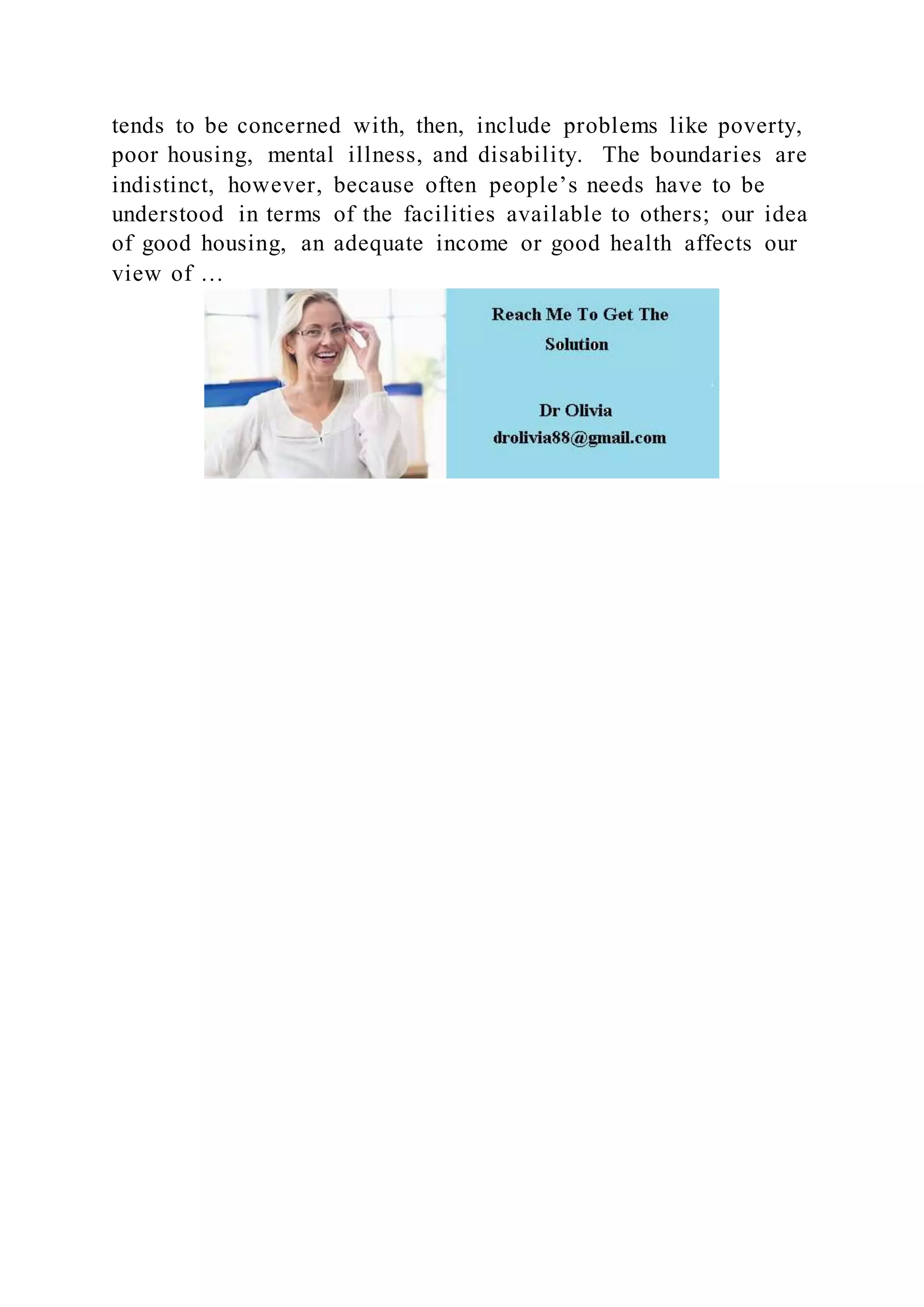This document provides an overview of a chapter from a social policy textbook that discusses the social context of welfare. It begins with an introduction to key concepts like the social nature of welfare and how individuals are embedded in social relationships and networks that make up society. It then explores topics like social inclusion and exclusion, and how understanding society is crucial for developing effective social policy and welfare. The document concludes by summarizing that people exist in social relationships and networks that collectively form society, and that welfare policy aims to improve people's lives in society but can only do so by comprehending society's composition.
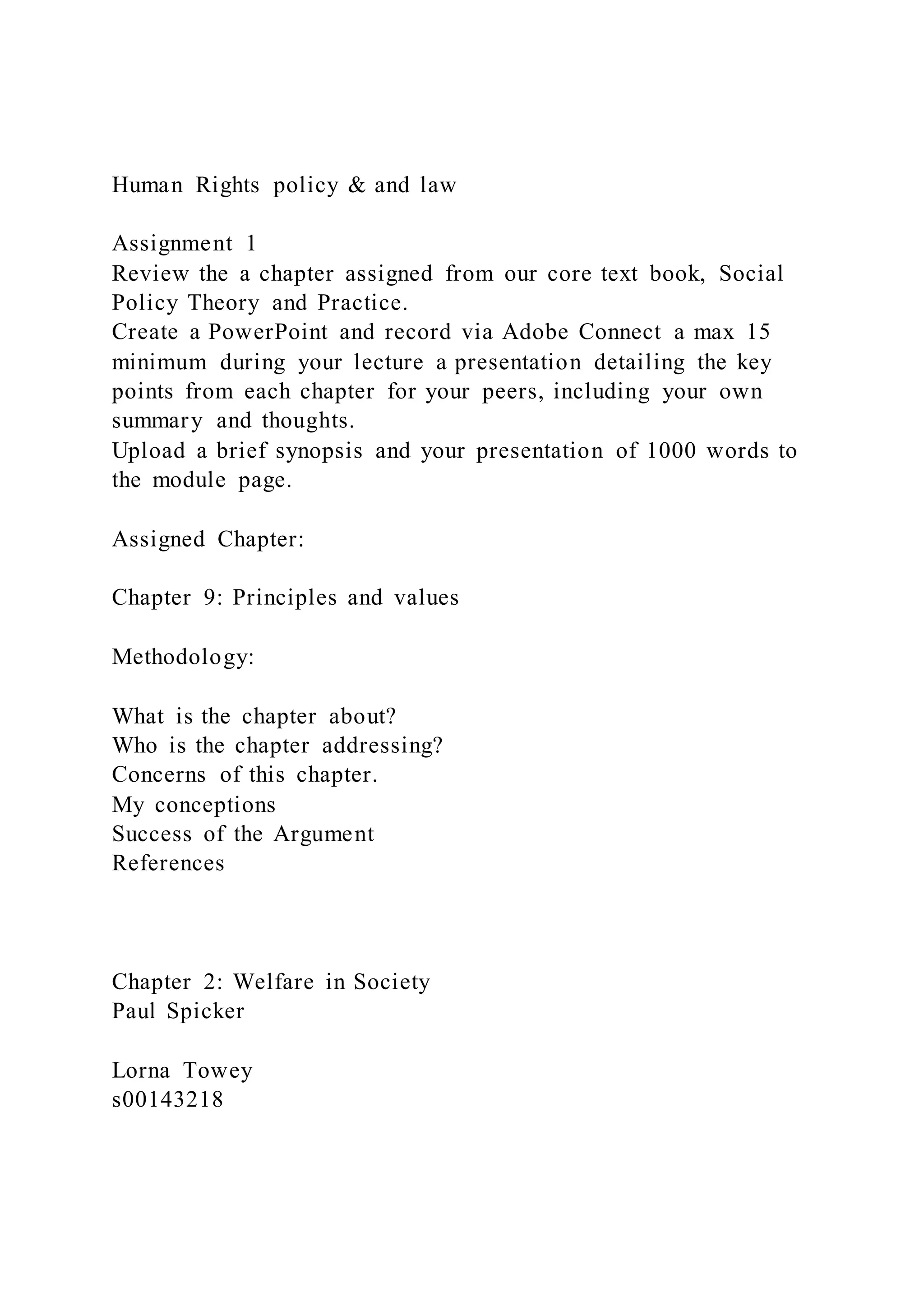
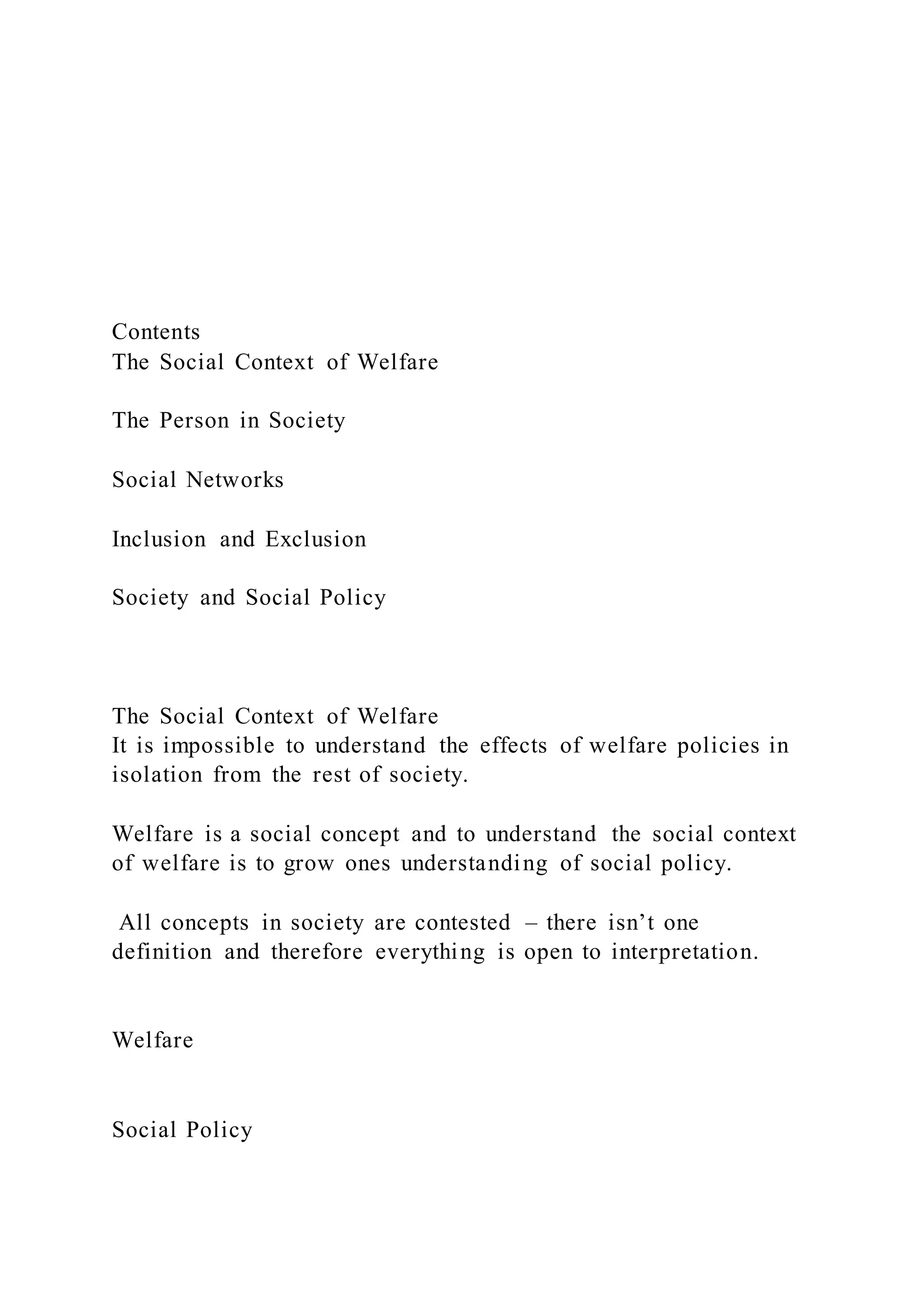
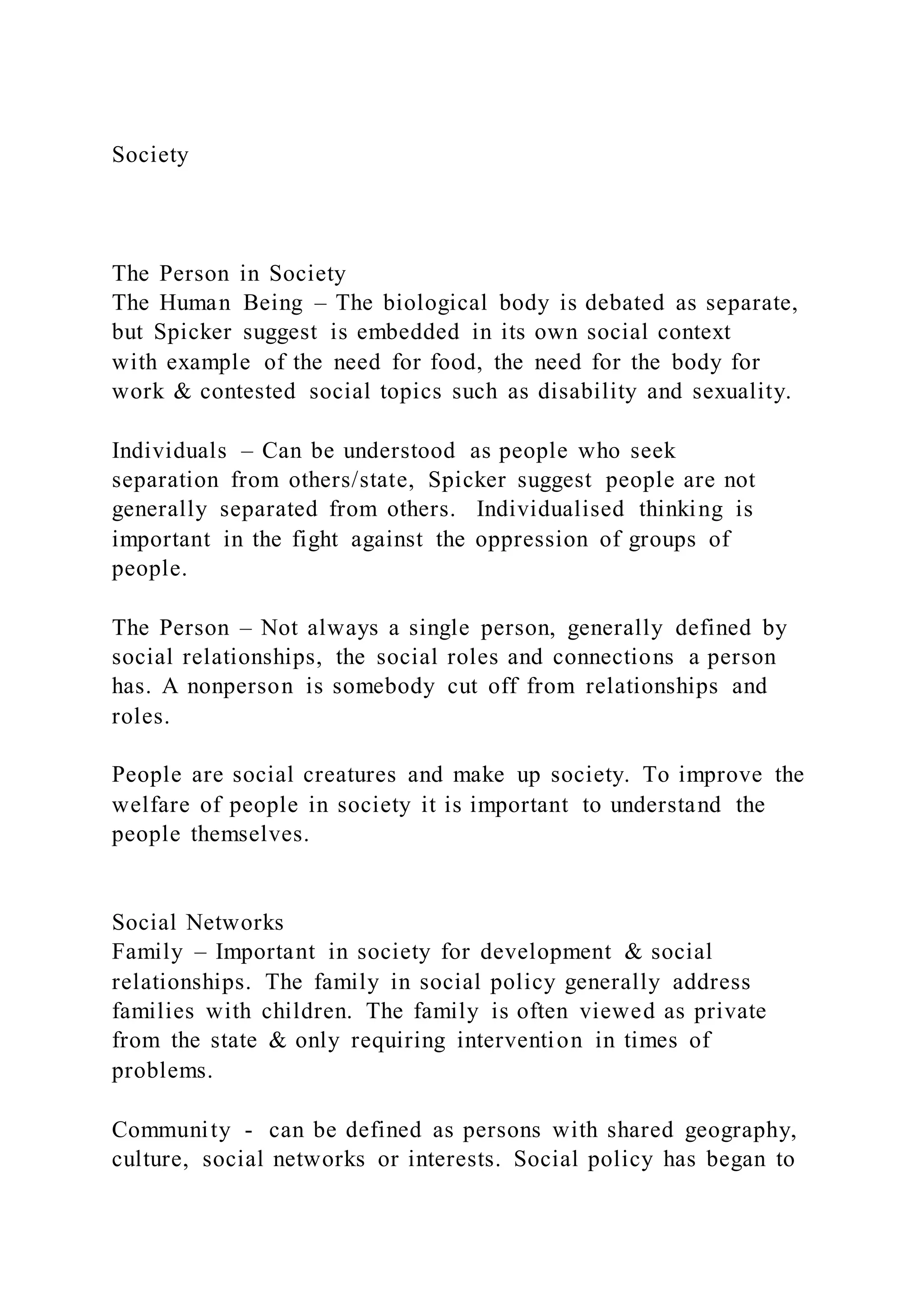

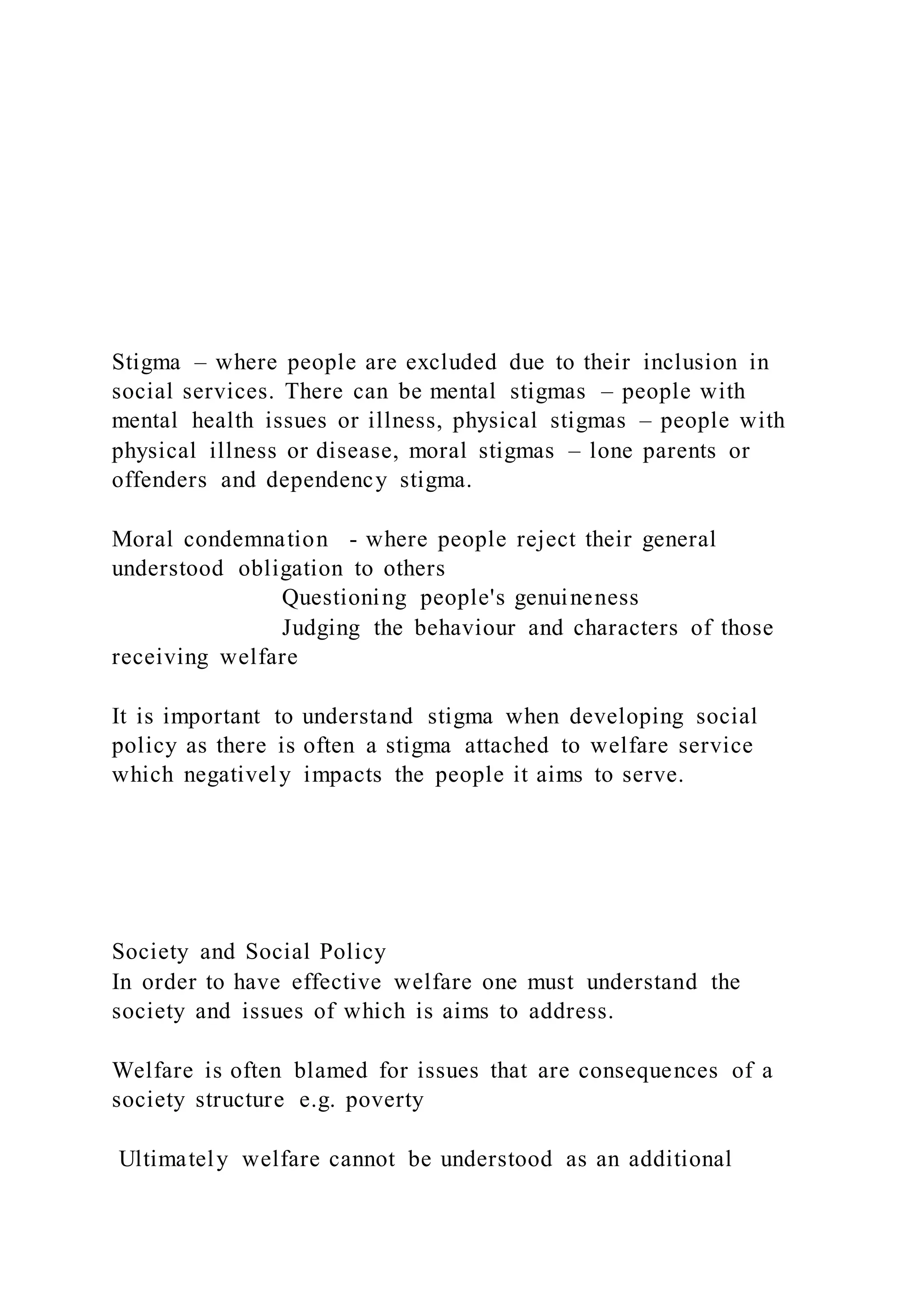

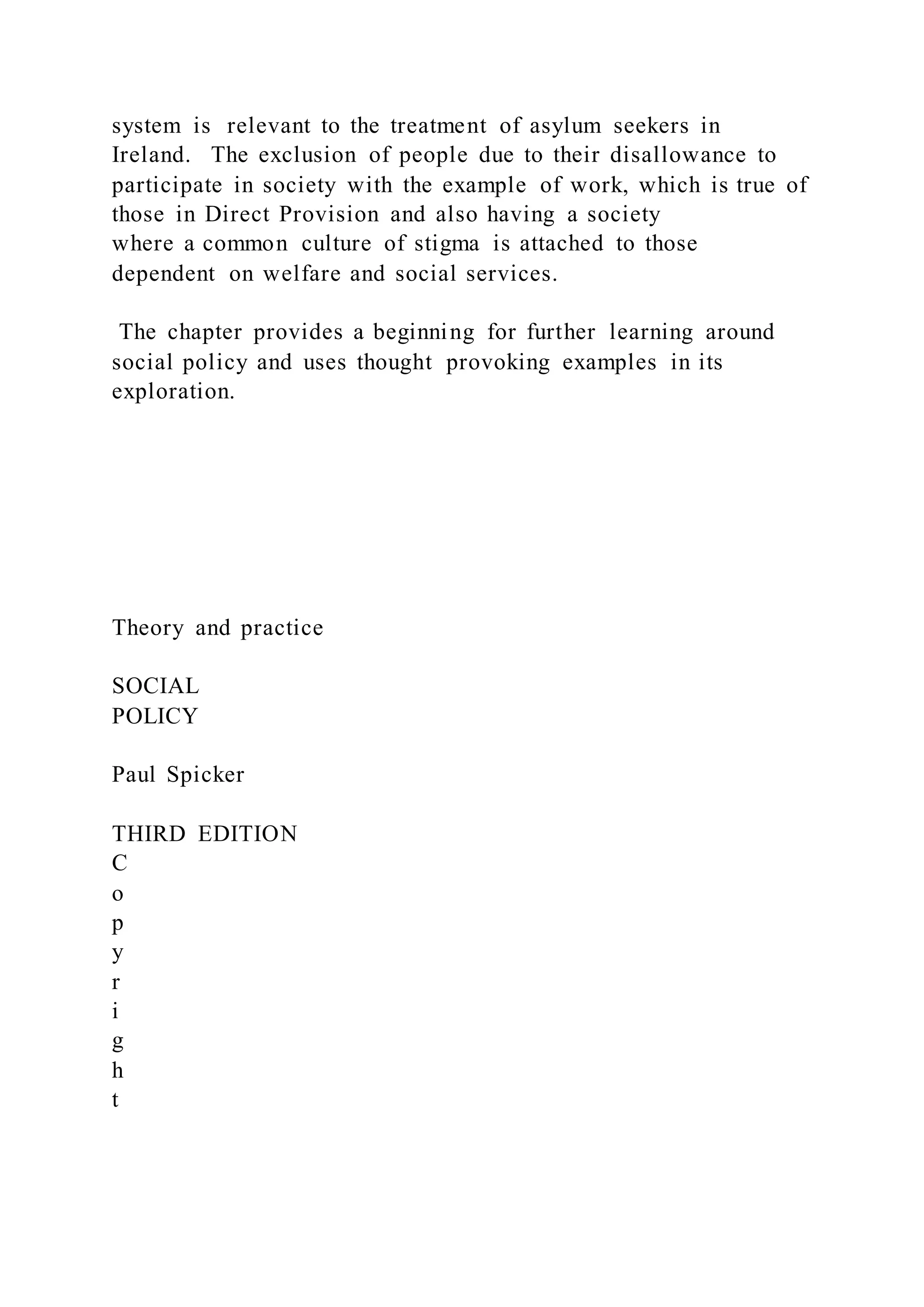





![EBSCO Publishing : eBook Collection (EBSCOhost) - printed
on 2/15/2021 6:53 AM via INSTITUTE OF TECHNOLOGY
SLIGO
AN: 1573525 ; Spicker, Paul.; Social Policy 3E : Theory and
Practice
Account: s7813921
Social policy
Theory and practice
Third edition
Paul Spicker
EBSCOhost - printed on 2/15/2021 6:53 AM via INSTITUTE
OF TECHNOLOGY SLIGO. All use subject to
https://www.ebsco.com/terms-of-use
This edition published in Great Britain in 2014 by
Policy Press North America office:
University of Bristol Policy Press
6th Floor c/o The University of Chicago Press
Howard House 1427 East 60th Street
Queen’s Avenue Chicago, IL 60637, USA
Clifton t: +1 773 702 7700
Bristol BS8 1SD f: +1 773 702 9756
UK [email protected]
t: +44 (0)117 331 5020 www.press.uchicago.edu
f: +44 (0)117 331 5367
[email protected]](https://image.slidesharecdn.com/humanrightspolicyandlawassignment1reviewtheachapte-211013102015/75/Human-rights-policy-amp-and-law-assignment-1review-the-a-chapte-13-2048.jpg)
